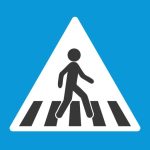The Next Best Thing to Wasted

What does a heroin addict want? However they define it, the sensation is recognized at the first encounter.
The epiphany is a glorious combination of peace, relaxation, drowsiness, euphoria, mental fog, and unawareness; the absence of anxiety, stress, or depression; in short, the banishment of physical, mental, and emotional pain. As one man told journalist Jessica Ravitz, his immediate and fateful reaction was, “I want to feel like this the rest of my life.”
Another heroin addict interviewed by the same writer said, “The problem with me wasn’t that I was going to die, it’s that I was going to live.” That feeling is shared by most people hooked on downers. They don’t necessarily want existence to cease, they have simply had enough of the messy, painful stuff that goes along with it. This same woman said, “I just thought I wasn’t going to live, so I never worried about getting old.”
Along with the ability to banish intractable physical pain and chronic mental and spiritual pain, opiates are famous for dulling other sensations, too, which means that the addict has literally discovered something better than sex — or at least, worth giving it up for. Of course later, when the addiction is fully developed and the analgesic effect refuses to kick in, the emphasis changes to desperately avoiding the pain of withdrawal.
The uppers, like cocaine and methamphetamine, are a whole different story, a pursuit of dynamism and the illusion of accomplishment, whether justified or not. But with downers, the users are stereotypically famous for nodding off. This sort of junkie wants to be deeply unconscious — “out of it.” The goal is to escape into oblivion.
Cut to: the aftermath of a multi-generational holiday dinner. The children may be out somewhere burning off a sugar rush, but chances are, the adults have mostly succumbed to immobility. This condition might be called the after-dinner dip, or a turkey nap, or food fatigue.
By any terminology, it is the same effect that opiate addicts crave — escape from the bonds of consciousness. Oblivion. Erasure of the environment. A very cheap version of virtual reality, especially if helped along by alcohol, as is customary on such occasions.
In an actual, classic coma, the person undergoes prolonged unconsciousness paired with the inability to wake, even if prodded by pain, noise, bright light, or other noxious stimuli. Although it probably doesn’t bother the victim, a legit coma is pretty scary for the onlookers.
Fortunately, “food coma,” as the useful colloquial expression goes, is not quite so bad. We’re talking about physical exhaustion, inability to concentrate, lethargy, low energy, the irresistible desire to sleep, and generally not giving a fig. Let the kids take apart the shed and sell it to the neighbors for firewood. Who cares?
Apparently, the concept of “food coma” is not exactly provable. The scientific endorsement has been slow in coming. Yet, it seems that official recognition of medical condition status ought to be granted, because to pass out face-down in the cranberry sauce is definitely something an addict would do.
It was formerly thought that the sudden and massive demand for blood in the gut area would cause a reduction in the available blood, activate the brain’s sleep centers, and send the person off to dreamland. But further scrutiny revealed that this only happens, if at all, to people who skip breakfast. Other research points the finger at any meal consisting of a lot of carbs, protein, and salt. Or, the problem might be the tryptophan and serotonin, or the orexin, neurotransmitters, melatonin, or cholecystokinin.
Specialist Cara Clark, who recommends the self-help practice of food journaling, adds possible reasons for the food fatigue phenomenon:
— food intolerance or allergy
— imbalance of macros: carbs, fat, and protein
— insulin resistance
— indigestion
— circadian rhythm
— metabolic pathway issues
— low stomach acid
At one point, news was made when…
[A] study compared the effects of a light lunch with a heavy lunch that had 3 times the calories, on driving and sleepiness. The heavy lunch increased the number of times drivers deviated from their lane, and the effects increased over a 2-hour period.
So it is just as well that, after the feast, the grownups remain supine and inert for a while. As it turns out, many creatures, even nematodes, share the postprandial somnolence trait, and this suggests that the habit formed for “deep-rooted evolutionary reasons.” Like most consequences, food coma can be alleviated. To escape the sluggish stage, these tips are offered:
Eat modest portions.
Choose balanced meals.
Limit alcohol intake.
Stay hydrated.
Get a good night’s sleep.
Use bright light.
Take a nap.
In other words, according to that last hint, give in. Sack out, and make arrangements to be wakened in half an hour. Relax, while appreciating the easy access to a socially respectable cheap high.
Written by Pat Hartman. First published June 14, 2024.
Sources:
“Inside the secret lives of functioning heroin addicts,” CNN.com, February 27, 2018.
“What Is a Food Coma? Here’s What the Science Says,” Healthline.com, undated
“Feeling Fatigued from Food?,” MuscleAndFitness.com, undated
Image Copyright: ynnil/Attribution-Sharealike 2.0 Generic




